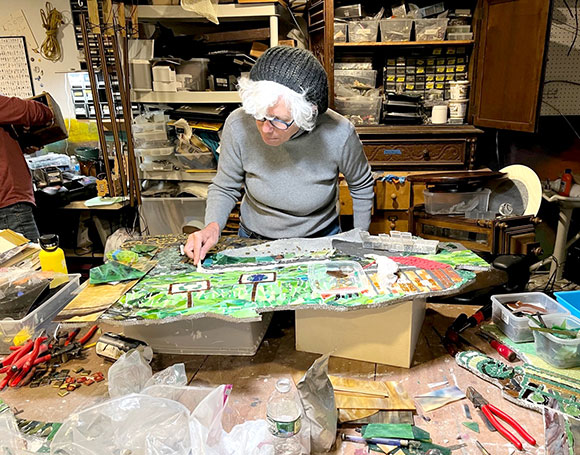
More than 100 participants volunteered to contribute to the creation of the new murals installed at the Charles River Greenway.
The New England Mosaic Society (NEMS) collaborated with the staff of the Charles River Museum of Industry and Innovation to design and create three large panels (42” x 68”) installed adjacent to the museum entrance on the Greenway.
The designs explore the positive and negative impacts of industrialization on the Charles River and the surrounding landscape over the last four centuries. The final project was a gift from NEMS to the museum and includes the work of over 100 sets of volunteer hands: skilled mosaic artisans, craftspeople, and community members.
The mosaics are installed on the walls of the Francis Cabot Lowell Mill where the museum is housed, a National Historic Landmark and the first fully-integrated textile mill in the world. The designs reflect historical research and conversation between NEMS and the Charles River Museum from 2022-2023. Thirty-five NEMS members from across New England crafted individual animals, trees, rocks, hills and building structures using their own materials, and mailed them to the project coordinator.
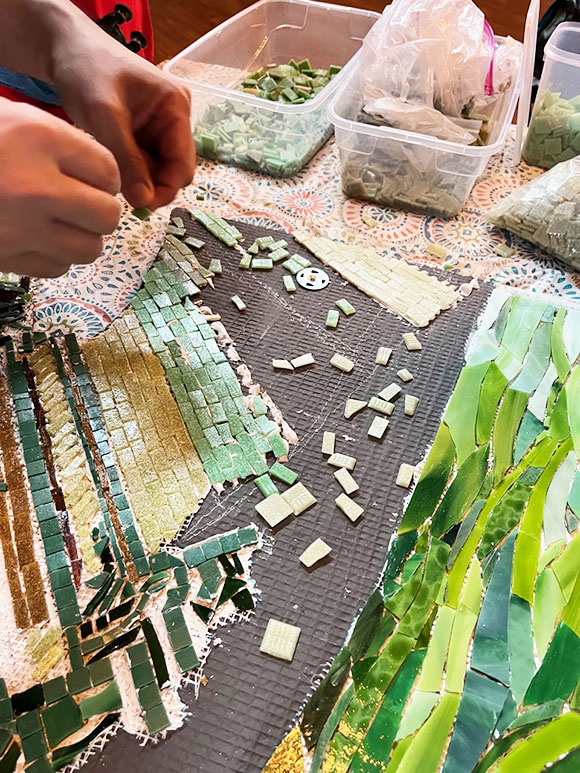
NEMS also organized three community tiling sessions during which members of the public, from small children to elders, helped to tile the skies, the rivers and the fields with glass and ceramic tiles. In community centers, senior facilities, and the Charles River Museum, more than 100 people participated in the project.
NEMS volunteers then combined all of the individual components, grouted the sections, and cleaned the panels (for hours!) to make them shine.
The mosaics were installed on November 2 as a gift from the New England Mosaic Society to the Charles River Museum. The project was supported in part by the Waltham Cultural Council and the Massachusetts Cultural Council.
Somerville artist Emily Bhargava, who coordinated the project, explained, “Nothing makes me happier than using art to tell a story in a public place. As we grapple with climate change and consider how to be good stewards of the land, it’s important to consider the local history that has played a part in bringing us to where we are today. Technology and innovation always come with a complex combination of risks and benefits.
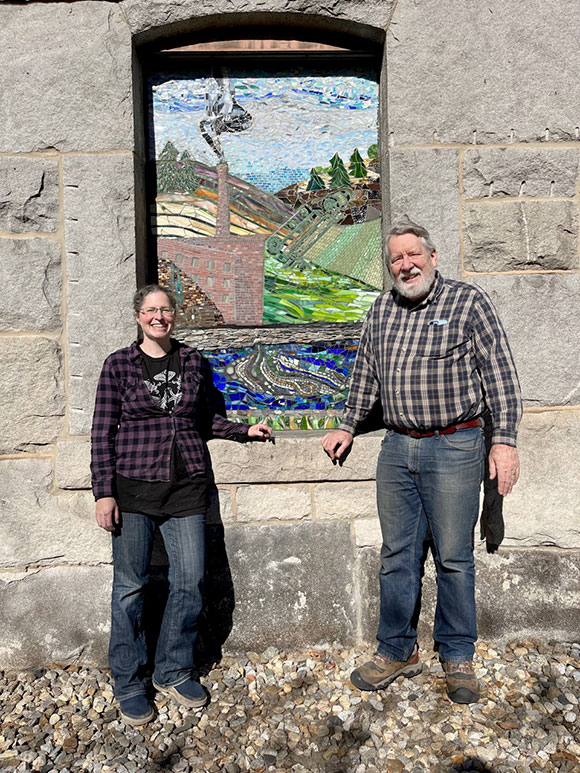
The mosaics highlight the beauty of the river while also raising questions about the role of technology in our lives and in our environment.” She added, “It took a huge amount of coordination to turn these ideas into reality but seeing them on the wall of the Museum and knowing how many people will pass them each year makes it all worthwhile”
Jamie Tessler, a NEMS contributor and member of the project design team shared, “We know that the built environment influences the economic and ecological aspects of a community for centuries. The communities that surround the mill, along with the river health and landscape diversity efforts, are never static; they are always evolving.
We also hope that the beauty of these collaborative artworks help to make meaning of these intersections, and that community members continue to learn more about this unique landscape, draw inspiration from the industrial legacy, and further the ecological restoration we see today.
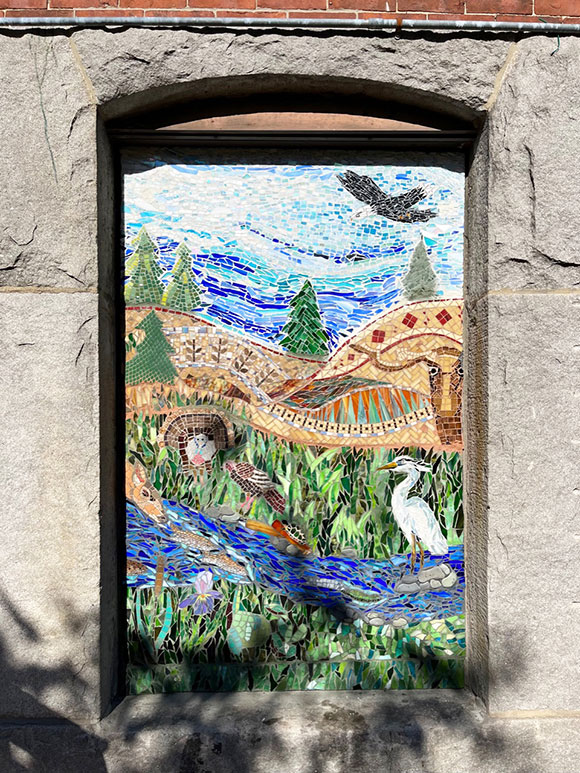
Panel #1 represents the pre-industrial period of the 1600s. The animals and plants in and around the river are native to New England, and local Native American textile patterns are incorporated into the hills. The river is pristine.
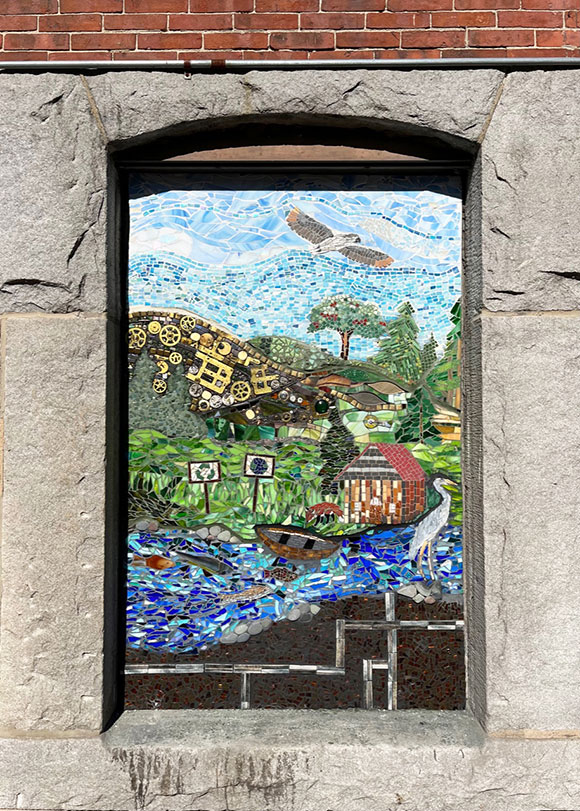
Panel #2 portrays the height of the mill operation in the 1800’s when industrialization had altered the environment, the health of the river, and the experience of workers and residents. The patterns in the hills change, and fields are woven by a mechanized loom. On the left you can see a cut-away of a mill that used the river’s water to power its machinery. There are fewer plants and animals, and the river and sky are changed by industrial waste and pollution.
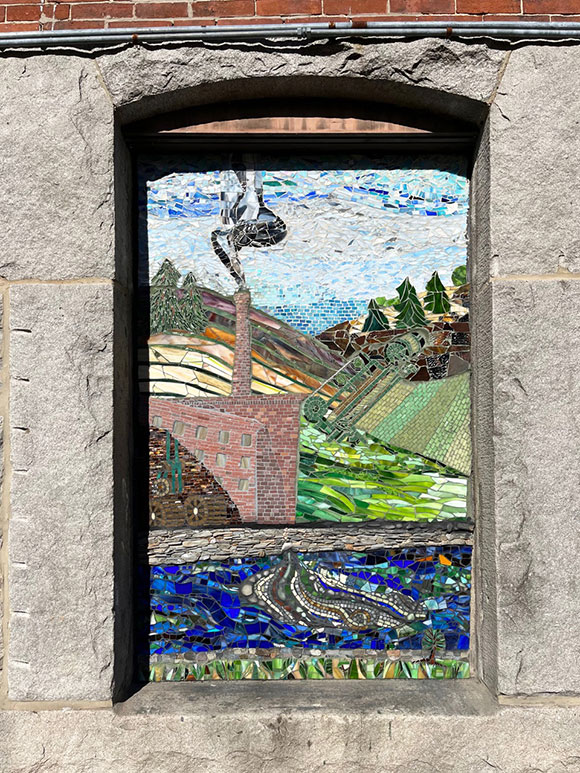
Panel #3 represents the current, post-industrial environment with both the detritus of former pollution and habitat destruction, and the authentic efforts of sanitation and environmental conservation. Ecologists lobby for environmental cleanup. There is manufacturing debris in the hills (including parts from Waltham watches!), and invasive non-native species. You’ll notice that the soil beneath the cabin is filled with sewage pipes and freshwater delivery systems, representing the built infrastructure that continues to serve us, with the canoe representing an upsurge in river recreation. Two protest signs symbolize strong public interest and political will funneled toward environmental stewardship of the river.

















Reader Comments